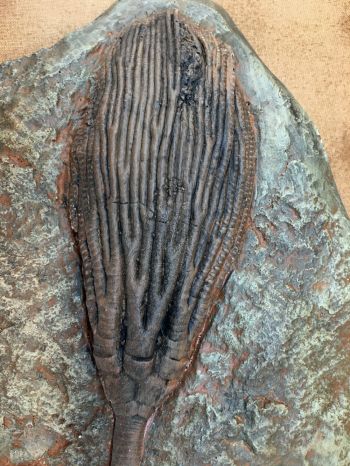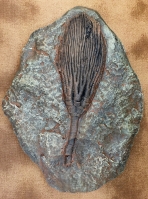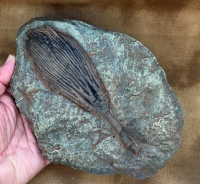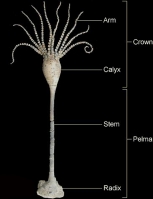
Crinoids are commonly known as sea lilies due to their "flower-like" appearance , though they are animals, not plants.
Crinoids are echinoderms related to starfish, sea urchins, and brittle stars. Like other members of their phylum they are spiny skinned, have a five-sided or pentaradial symmetry as adults and a calcium carbonate endoskeleton.
Although crinoids are the least understood of living echinoderms, their skeletal remains are among the most abundant and important of fossils. Crinoids were major carbonate producing organisms during the Paleozoic and Mesozoic. In fact, in many Paleozoic and Mesozoic settings entire carbonate shelves were composed predominantly of crinoidal remains. In such examples, the enormous volume of skeletal material controlled the sedimentary environment.
The first true Crinoids appeared during the Lower Ordovician. Following the global mass extinction at the Silurian boundary, they and underwent several major radiations at the early Devonian, Mississippian (peak) and Pennsylvanian. They almost became extinct at the end of Paleozoic Era in the Permian, but recovered to flourish again during the Mesozoic, in the Triassic and Jurassic. More than 6,000 fossil species, belonging to more than 800 genera, have been described.
Today, approximately 600 living species are known: most free-living feather stars or comatulids living in the shallow seas. About 80 species of stalked sea lilies are restricted to the deeper water of today`s ocean. Watch deep sea crinoids attached to sponge at 1200 feet off the coast of Roatán an island in the Caribbean, about 65 kilometers off the northern coast of Honduras.
HydroStone
8 x 5.75 inches
Item 2442
Category: Replicas
Type: Skeletons
Phylum: Invertebrates
Class: Crinoids
MORE PHOTOS:




Now Over 1,000 Items!
PrehistoricStore.com offers the largest selection of replica fossils and other fossil-related products anywhere in the world!
Download a Full Catalog (3MB PDF)
OVER 260 PAGES OF REPLICAS AND MORE!
